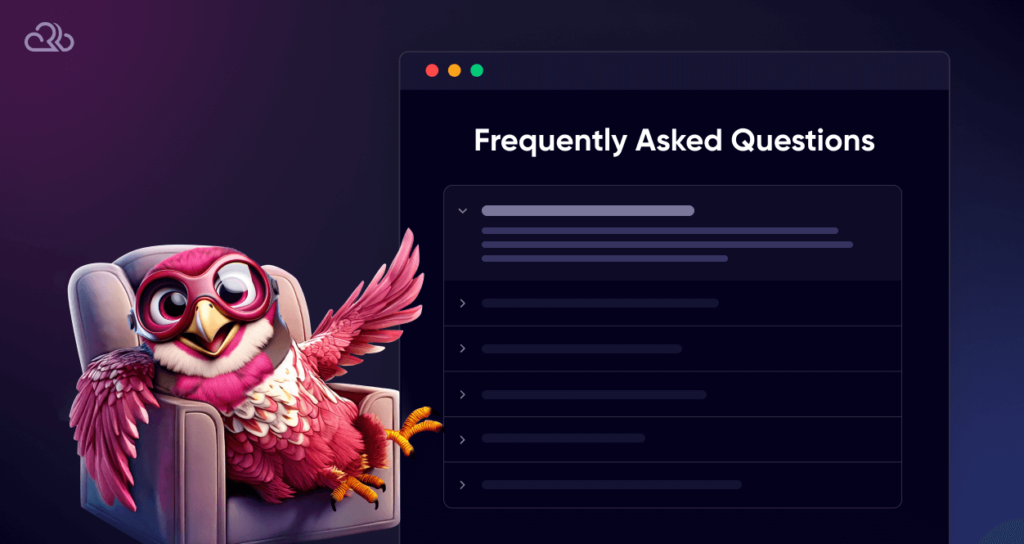If you ever dreamed of creating a WP website with recurring monthly revenues, now is the best time to do it. With the right strategy and consistency, a WordPress membership-based website is the key to generating a healthy and stable stream of ongoing income.
While there are many nuances in creating a membership site, with WordPress, it is surprisingly easy to do with little to no knowledge of coding.
This comprehensive guide will walk you through every step, from choosing the right tools to setting up payment options and crafting engaging content. By the end, you’ll have a fully functional membership website ready to generate your income.
Prerequisites on How to Create a Membership Website
Before moving on, it is important to know the essential prerequisites required to build a highly converting membership-based website. These lay a solid foundation for your membership website in creating a valuable and sustainable online business community.
1. Define Your Niche and Target Audience
Define clearly your niche and the target audience. Ask questions to yourself like:
- Who is my target audience?
- What is their age?
- What are their likes and dislikes?
- What is their propensity to spend on such a membership site?
For example, if you are selling a course on leadership for women, then your target audience could be between the ages of 30 and 50, and most probably working moms, who have a job and family that need to be balanced.
2. Content Strategy
Plan your content roadmap, including free and premium offerings. In advance, outline the topics, formats, and delivery schedule. Ensure consistency across all formats and content when posting. Remember, by being consistent you can gain a strong following online.
Examples include weekly articles, monthly webinars, video tutorials, downloadable resources, and interactive quizzes.
Free vs. Premium Content. Determine what content you’ll offer for free to attract visitors and what exclusive will be available exclusively to paying members. Examples of free content include blog posts and social media videos to build a loyal following.
3. Decide on a Monetization Model
What are the different membership levels that you’ll offer? You can opt for a simple, flat monthly pricing or different tiers with added benefits. For example, a basic tier with access to core content and a premium tier with additional resources and support including one-on-one coaching.
It’s simple; you get what you pay, and with higher premiums come great benefits and additional resources. Have affordable monthly recurring pricing for guaranteed support. It is better to charge low but ongoing monthly payments as a form of recurring revenue rather than selling high one-off payments.
But what works best is for you to decide. If your industry has a monthly recurring payment model then go for it, else see how you can utilize the high ticket pricing model.
4. Develop an Engagement Plan
You should have a proper engagement plan, no different than the content strategy. You need to respond to comments, inquiries, and provide complete support to your members. This is called engagement.
There are various methods to communicate with your members such as using welcome emails, newsletters, and announcements.
Personalized content recommendations, exclusive events, or loyalty programs; these are some of the best ways to engage your audience. Remember, audience attention is the key and the only way to do it is through constant engagement.
How to Create a Membership Website with WordPress?
Now that we’ve learned the prerequisites, it is time to roll up our sleeves and start building one ourselves. You can make a membership site via a membership website builder but with WordPress, you have additional flexibility of creating an exceptional website.
Step 1: Purchase a Domain
Whenever you choose any one of our hosting plans, you will have the option to either register a new domain or transfer one over to Rapyd Cloud.
On the flip side, Namecheap, Godaddy and Hostinger all are great registrars to register your domain.
Step 2: Purchase Quality WordPress Hosting
When building a membership website, choosing the right hosting is important. With shared hosting, your server resources are distributed among thousands of other websites, leading to slower performance and potential security risks. With Managed WordPress hosting, you get the speed, reliability, and security needed for a seamless membership experience.
Managed WordPress hosting provides essential features for membership sites, such as automatic backups, enhanced security measures, CDN for faster load times, and scalable resources to handle growing memberships. In addition, you get support of WP experts ready to tackle any issue your website faces.
In terms of cost, Managed WordPress hosting from Rapyd Cloud starts at just $35/month—significantly more affordable than dedicated hosting, which typically costs $60+ per month.
Step 3: Purchase a Premium WordPress Theme
Choose a theme that is visually appealing, responsive, and compatible with membership plugins. BuddyBoss offers an amazing bundle of theme + plugin that works in tandem to power up your community website.
You can also visit Themeforest.net to purchase a membership site theme which costs in the range of $59 to $69 for a one-time fee.
Step 4: Purchase & Install a Membership Plugin
Having a premium theme is just the beginning. To convert your WP website into a fully functional membership platform, you’ll need to purchase and install a membership plugin. These plugins have multiple features such as content restriction, membership levels, payment gateways, user manager, digital downloads, course creations and community discussions.
Popular membership plugins include MemberPress, Paid Memberships Pro, Restrict Content Pro, LearnDash and TutorLMS, ARMember, among many others.
Step 5: Set up MemberPress (or Your Chosen Plugin)
The price of any paid plugin varies upon your requirements and the developer’s brand reputation. Some are free whereas others cost anywhere from $179 to over $300 per year.
Once you acquire the paid license, activate the plugin through the WordPress dashboard. Configure the plugin settings, including payment gateways, membership levels, and content access rules. Familiarize yourself with the plugin’s features and documentation.
To know more on setting up an LMS for your WP website, you can know more in our Tutor LMS Review, LearnDash LMS Review and Sensei LMS Review.
Step 6: Add a Payment Method
To generate sales from your membership website, you need a payment gateway that accepts debit and credit cards and charges on a recurring basis every 30 days. For this, Paypal and Stripe are the most viable options as the leading payment solutions. You can easily integrate them with every membership plugin and process payments without any hassle.
In your WP plugin setting, you can configure the payment gateway, set the currency and specify recurring billing options for your paid members.
Step 7: Creating Membership Levels
Every membership website has different tiers or plans that cater to a diverse range of audiences. The main differences among these plans are prices and the features. Similar to any SaaS product that you use, you can very well figure out how the subscription plans work.
With a membership site, it is no different. When you create content, it is important to develop different plans and sell those according to your target audience. You can create those in the plugin settings in WP for your plugin.
Step 8: Restrict Access to Membership Plans
Every great piece of content that was once freely available, is now behind a paywall. From top news journals such as The New York Times and The Washington Post to websites selling premium courses, much of the content is restricted only to members.
But here’s something different that you have to do.
Restrict content with the levels of membership plans. Similar to Shopify that charges more for extra benefits and perks, create plans, and restrict content accordingly. Members who value quality content understand the worth of getting access to it by paying a premium price.
Step 9: Adding Members-Only Content
One of our clients on Rapyd Cloud is an online English language instructor. While most of the videos on his social media platforms provide value, it’s the content in his WP membership website that provides additional support and engagement.
A free English language course comes with no support and covers only the basics.
But a premium course gets you support, one-on-one consultation, assignment feedback and community discussions. This is what separates members-only content with free content available on other platforms.
Step 10: Create a Pricing Page
Design a clear and concise pricing page that showcases your membership options. Highlight the benefits of each membership level.
For example, the pricing page of MemberPress has a unique layout. Instead of starting from Basic to Pro in a natural left-to-right eye movement, they have done the opposite. Their plans are also categorized for the different types of online entrepreneurs such as bloggers, educators, coaches, developers, ecommerce experts and small business owners.
For every pricing plan, the full list of benefits displays everything clearly progressing as the price increases.
They also have a nice orange-colored CTA to entice users into purchasing their premium plugin.
Step 11: Add Sign-up and User Login Forms
Create user-friendly registration and login forms. If you have a look at one of our clients, you can see that there is no clutter on their website.
The registration form is clean, simple and to-the-point, which means anyone landing on this page should be able to easily sign up. Place these forms strategically on your website (e.g., homepage, sidebar).
Launch Your Membership Empire Today
Launching a membership website is more than just a way to share your skills and expertise —it’s a powerful step toward creating a sustainable online business. Consider Rapyd Cloud as your business partners, ready to help you at every step of the way with the best WordPress hosting for high traffic and with specialized products like MemberPress hosting and LMS hosting services.
As long as you continue providing the right value to your audience, you never have to worry about paying the bills. Take the first step today and create a membership website with WordPress using steps outlined in this guide. You can check this blog for memberpress review.
Frequently Asked Questions

Can you create a membership site on WordPress?
WordPress is an amazing platform providing freedom and flexibility to create powerful membership websites. You can use plugins like MemberPress, BuddyBoss, etc., to create and manage membership websites.
How to create a subscription page in WordPress?
You can create a subscription page using MemberPress. You get all the tools you need to design pricing pages and manage subscription options.
Is there a membership plugin for WordPress?
MemberPress, Paid Memberships Pro, and Restrict Content Pro are some of the most popular plugins for this purpose.
How do I enable membership on WordPress?
You’ll need to install and activate a membership plugin such as MemberPress. These plugins provide the functionality to create membership levels, restrict content, and manage members.
Is MemberPress free?
MemberPress is a premium plugin with various pricing plans based on your needs.






